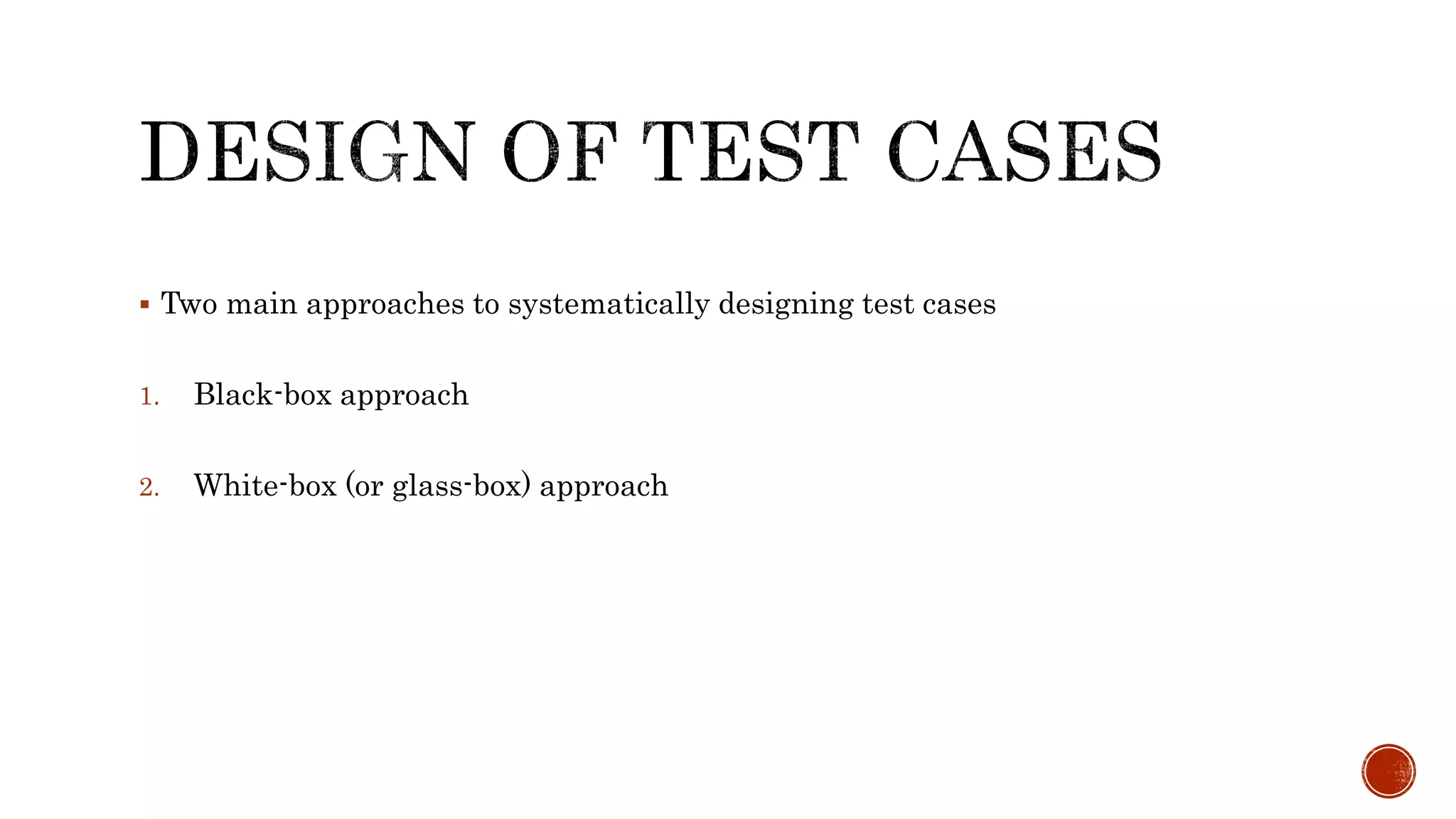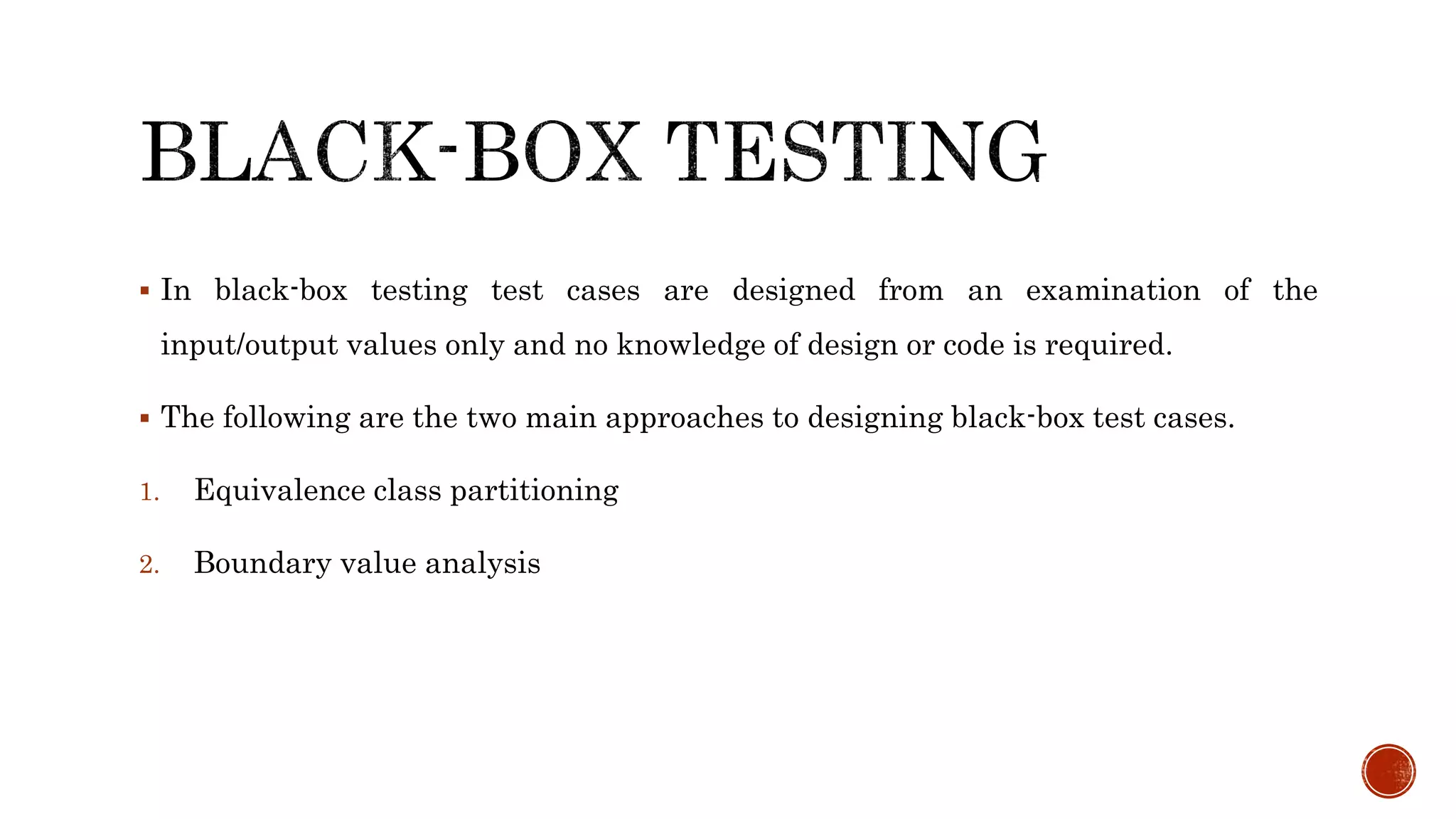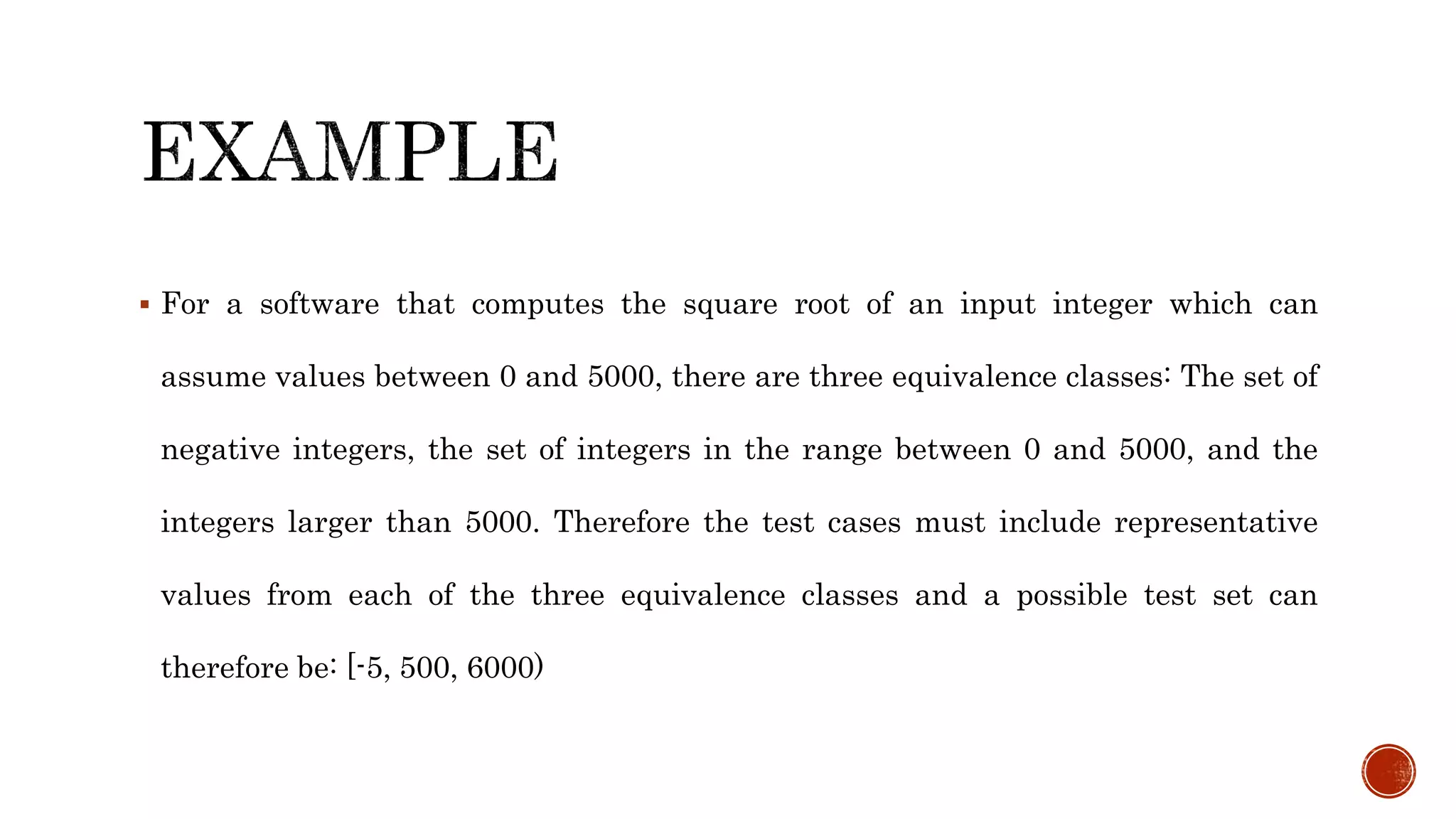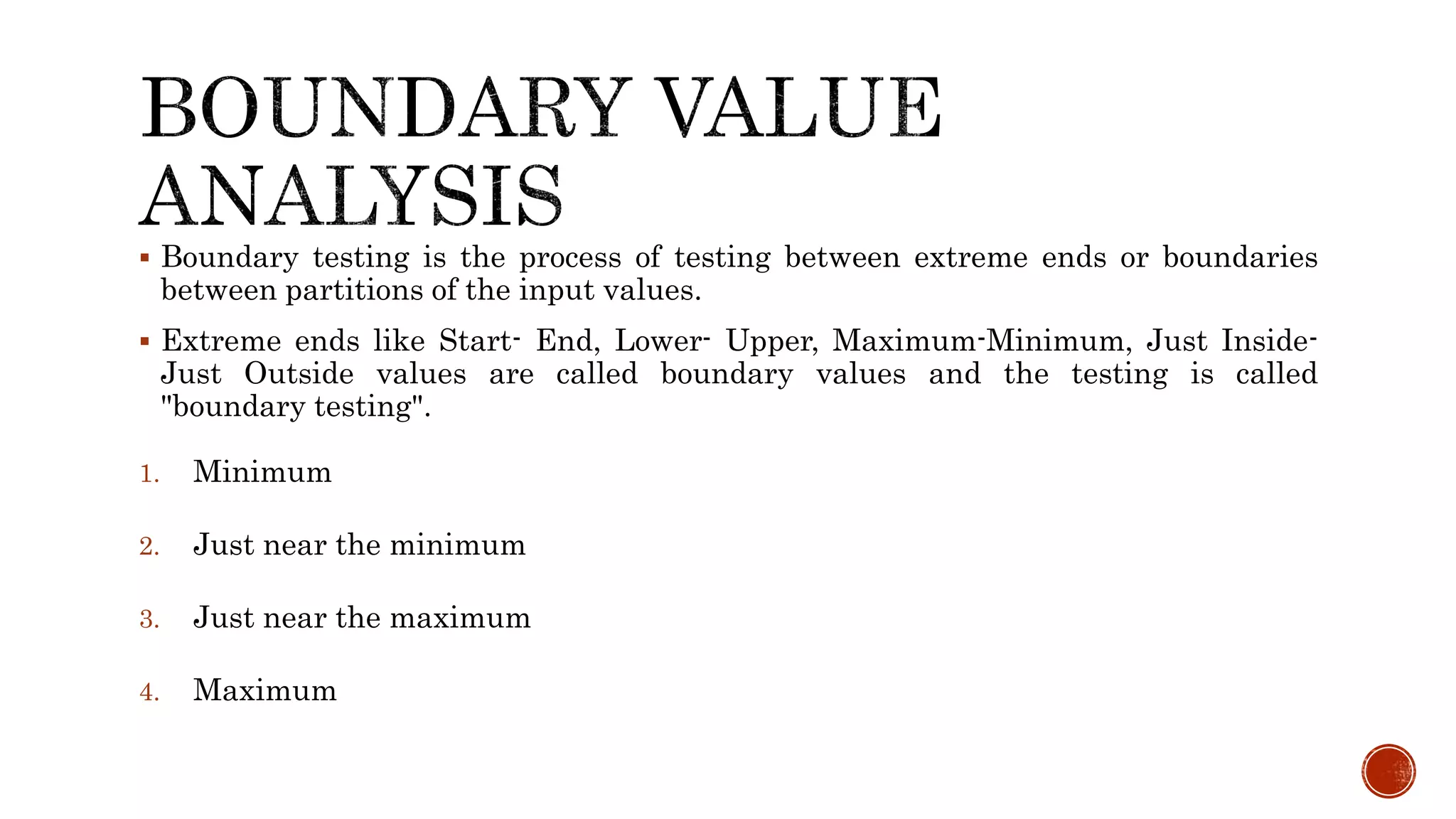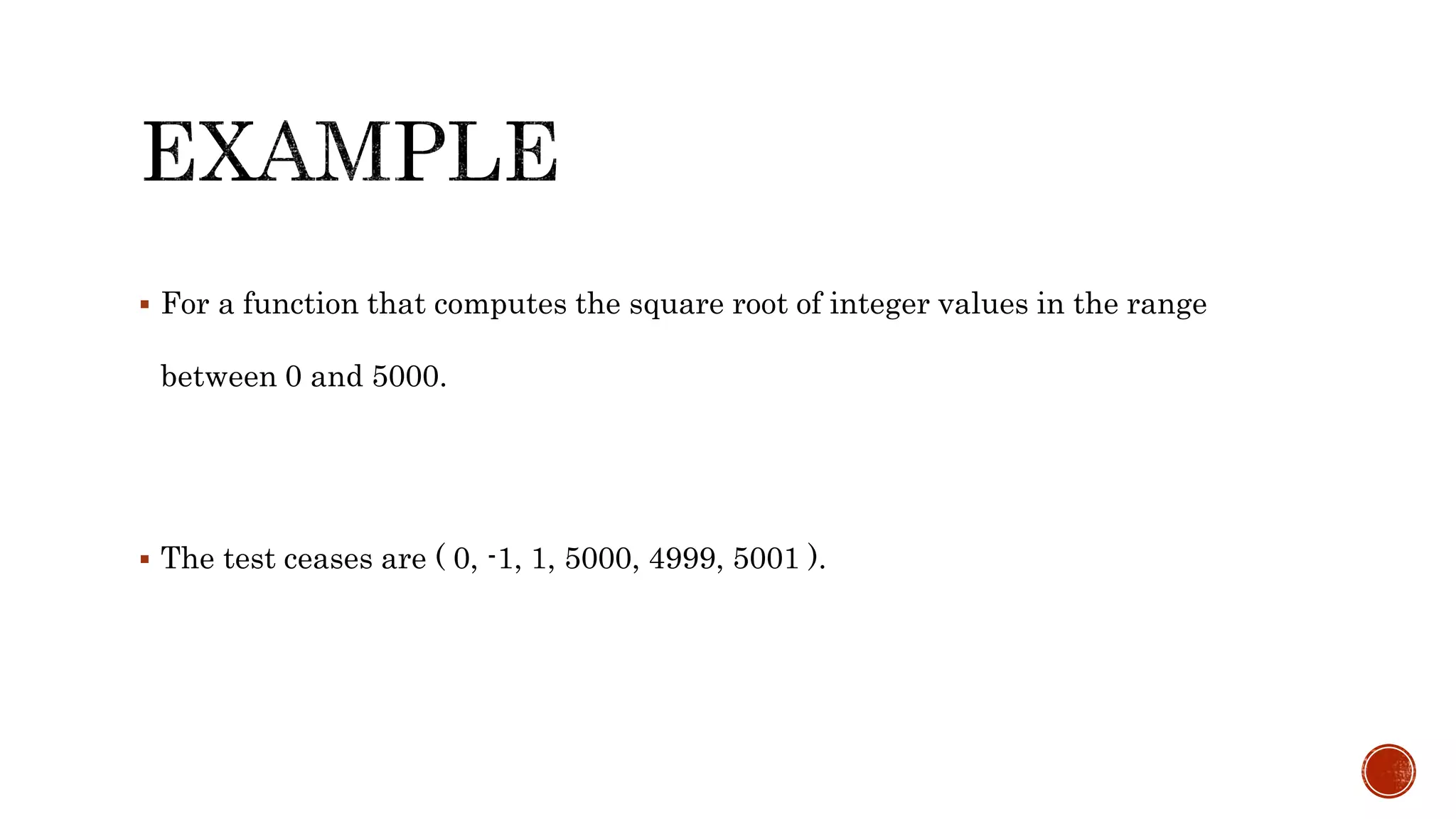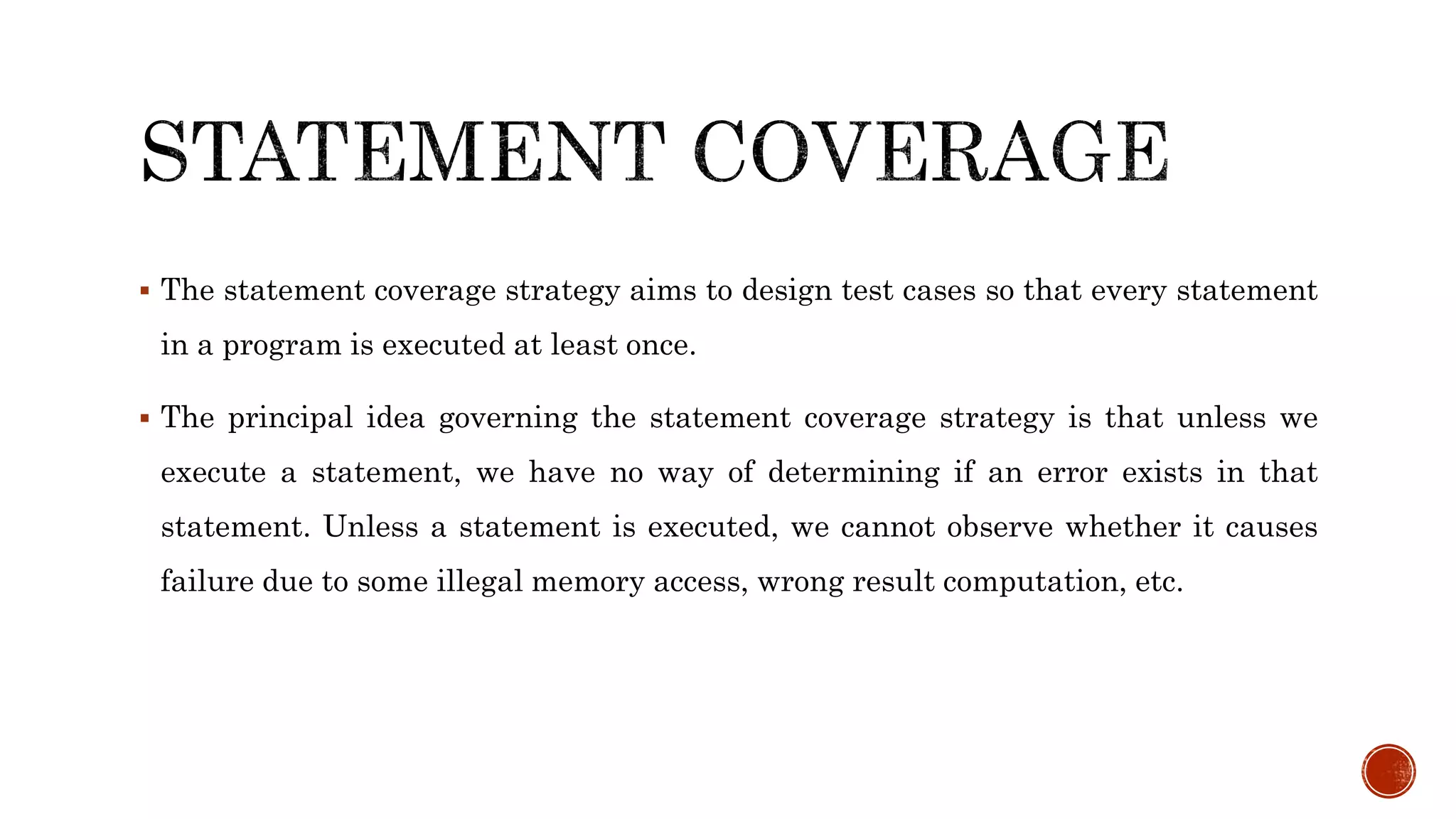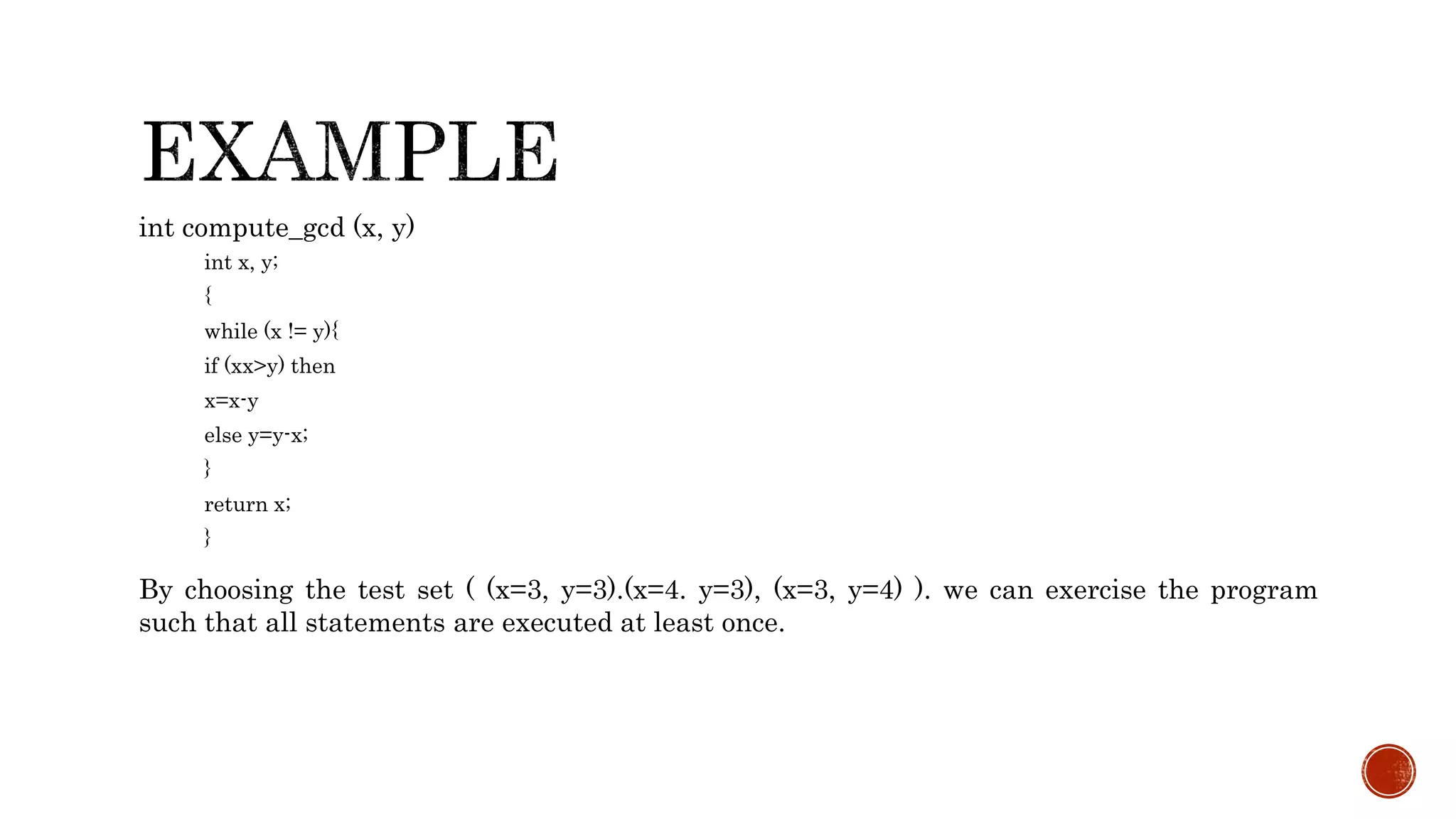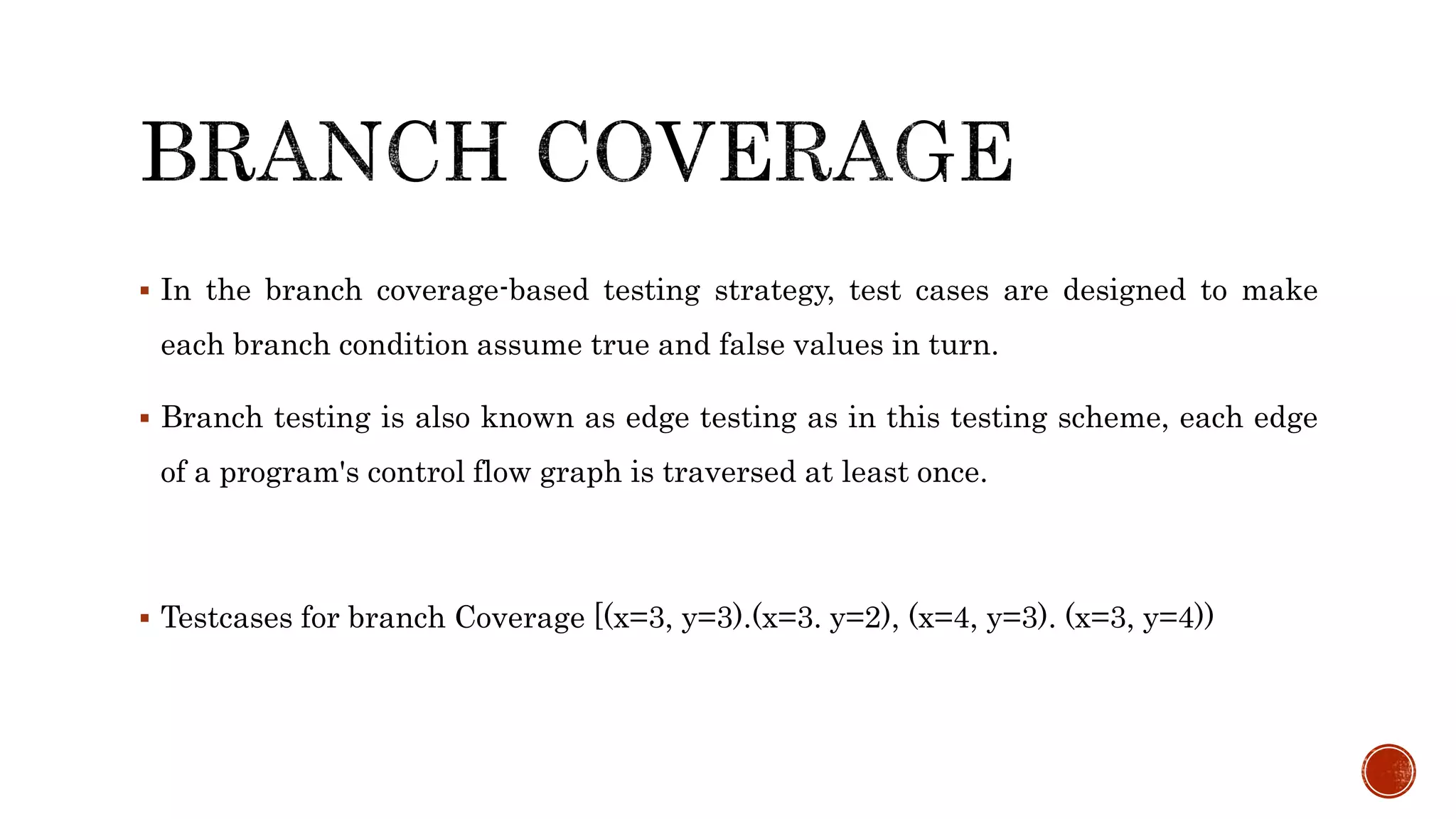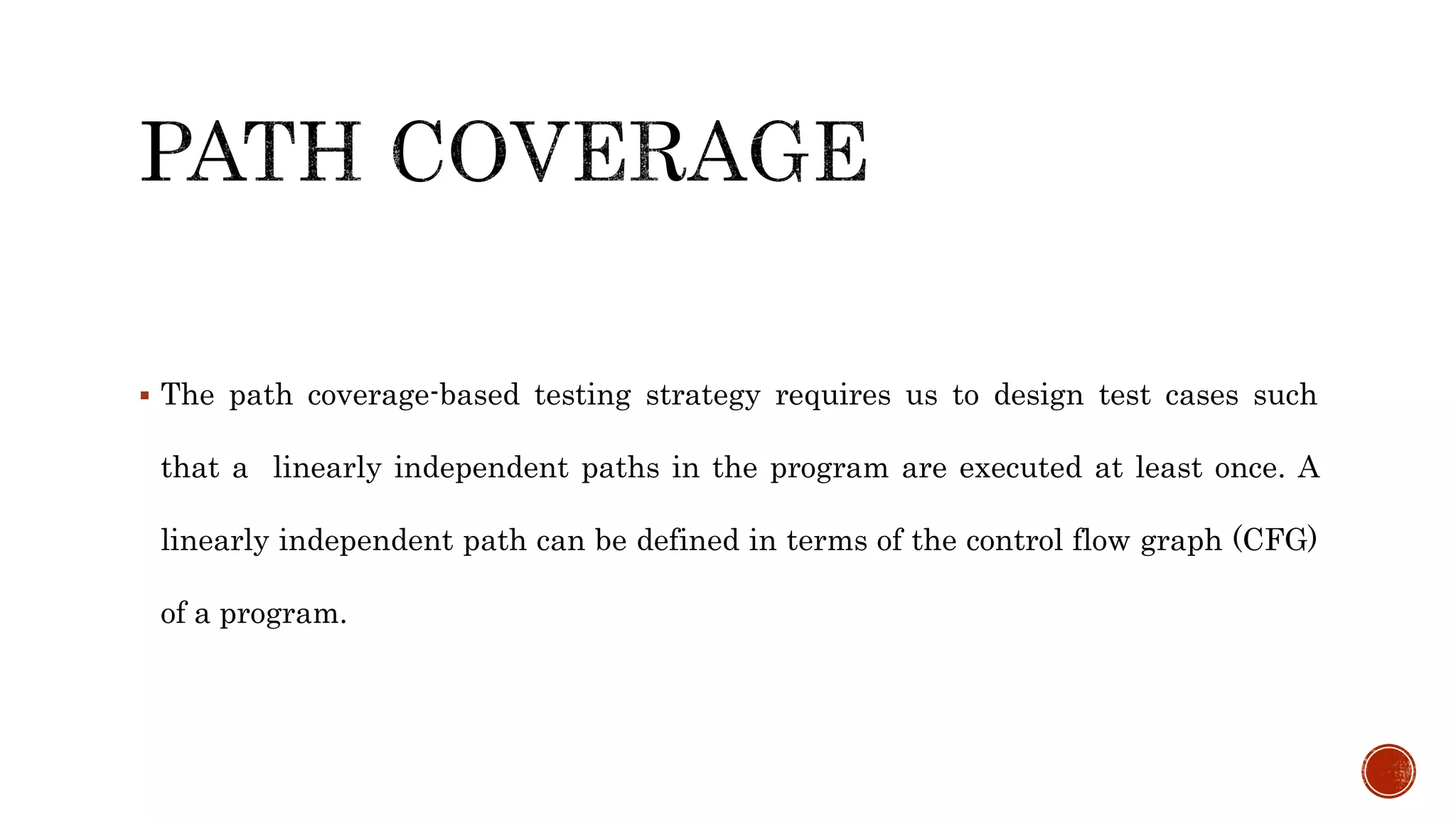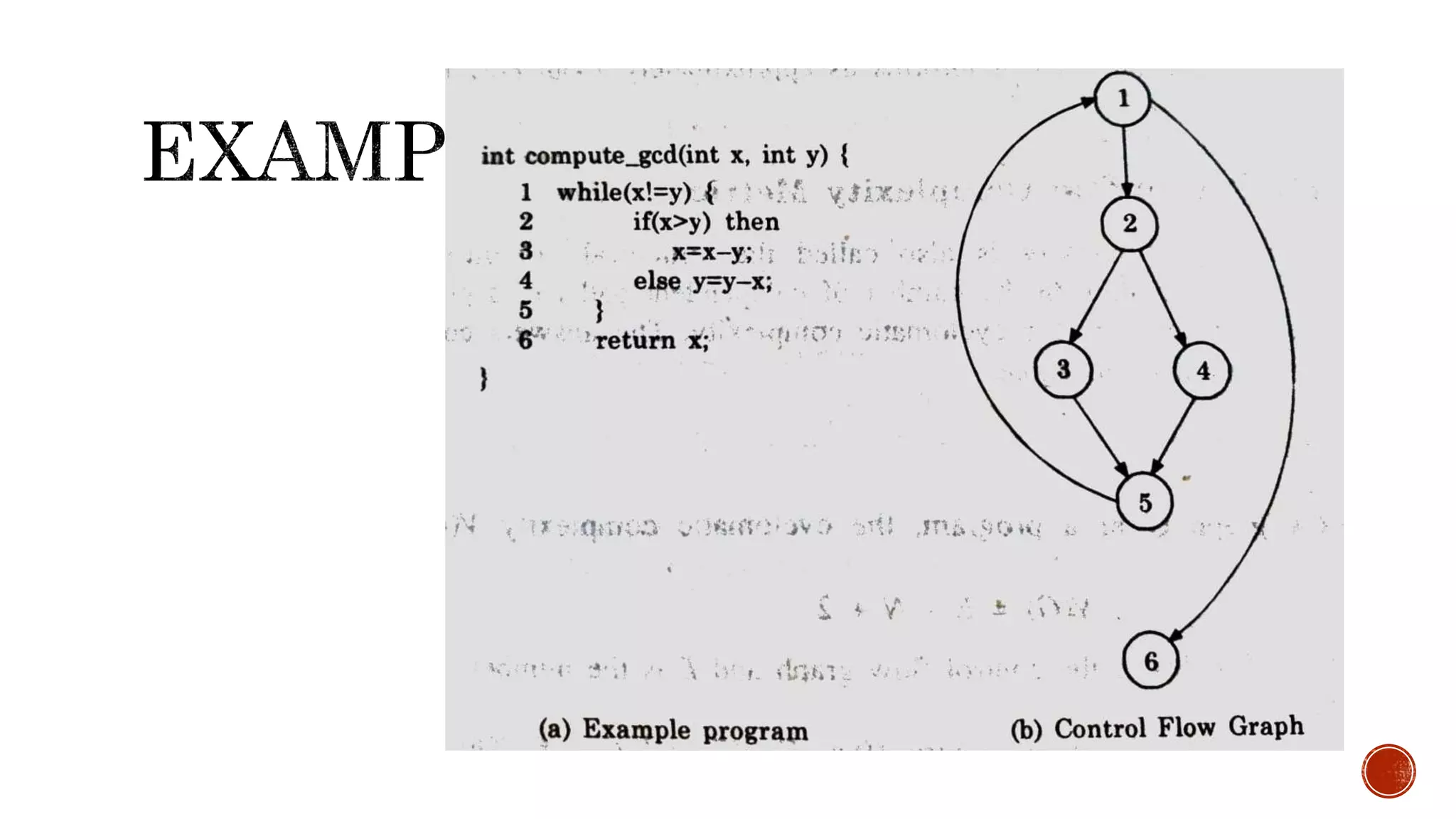This document discusses various software testing techniques including coding standards, code reviews, code walkthroughs, code inspections, test case design, black box testing, and white box testing. It provides examples of statement coverage, branch coverage, and path coverage testing strategies to ensure all statements, branches, and paths are executed at least once. Testing approaches like equivalence partitioning and boundary value analysis are discussed for black box testing, while coverage criteria guide test case design for white box testing.
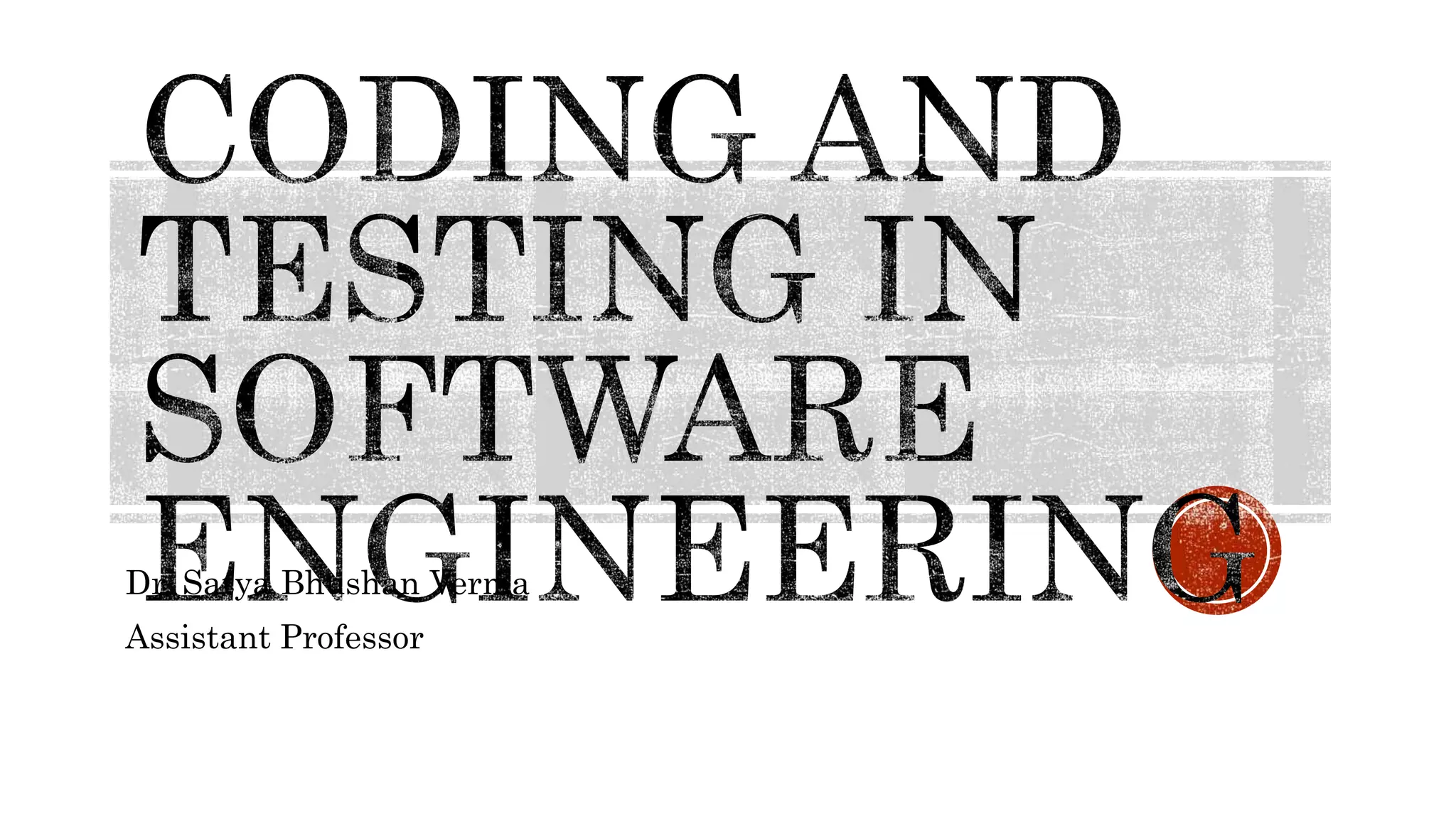
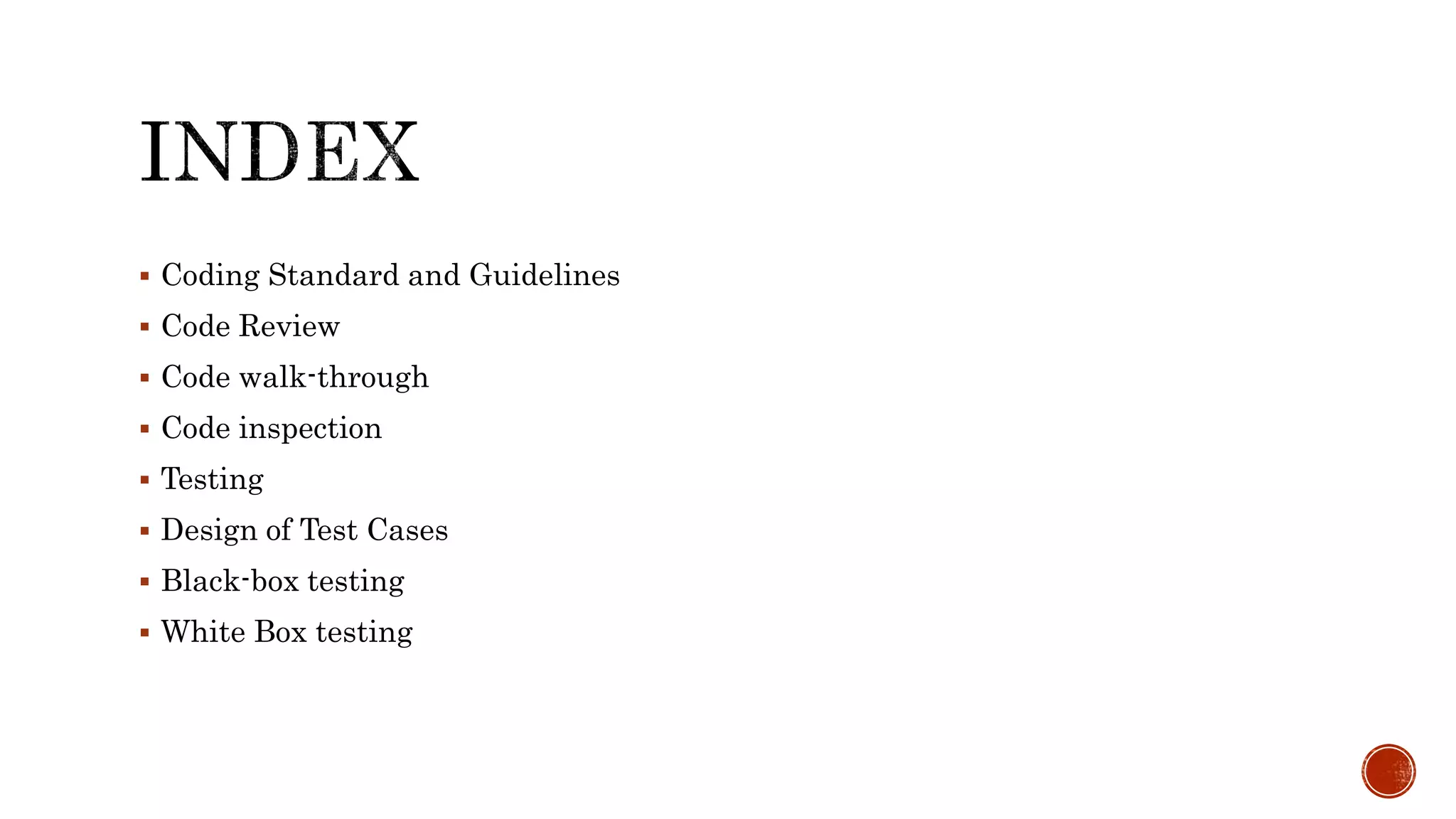
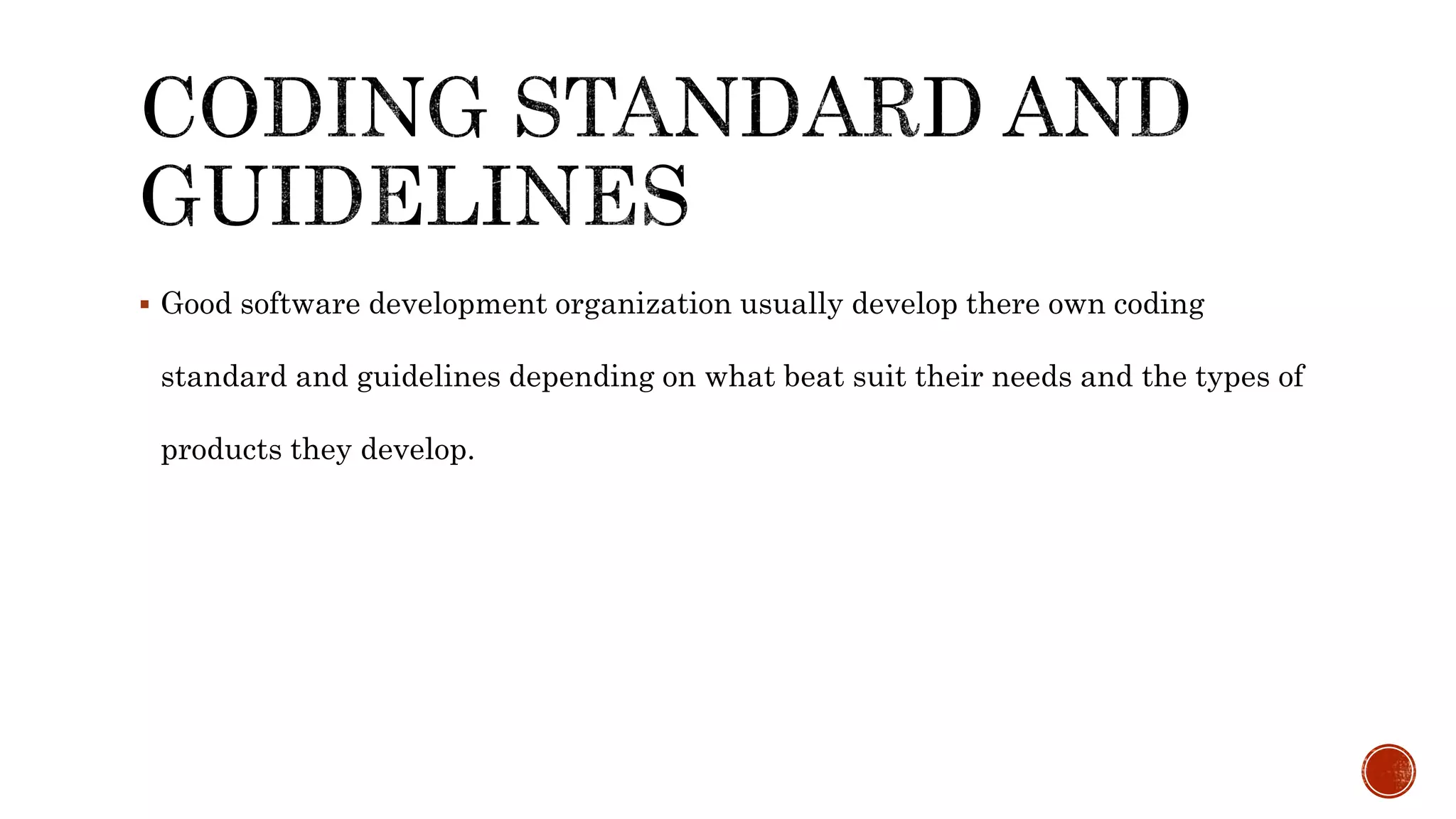
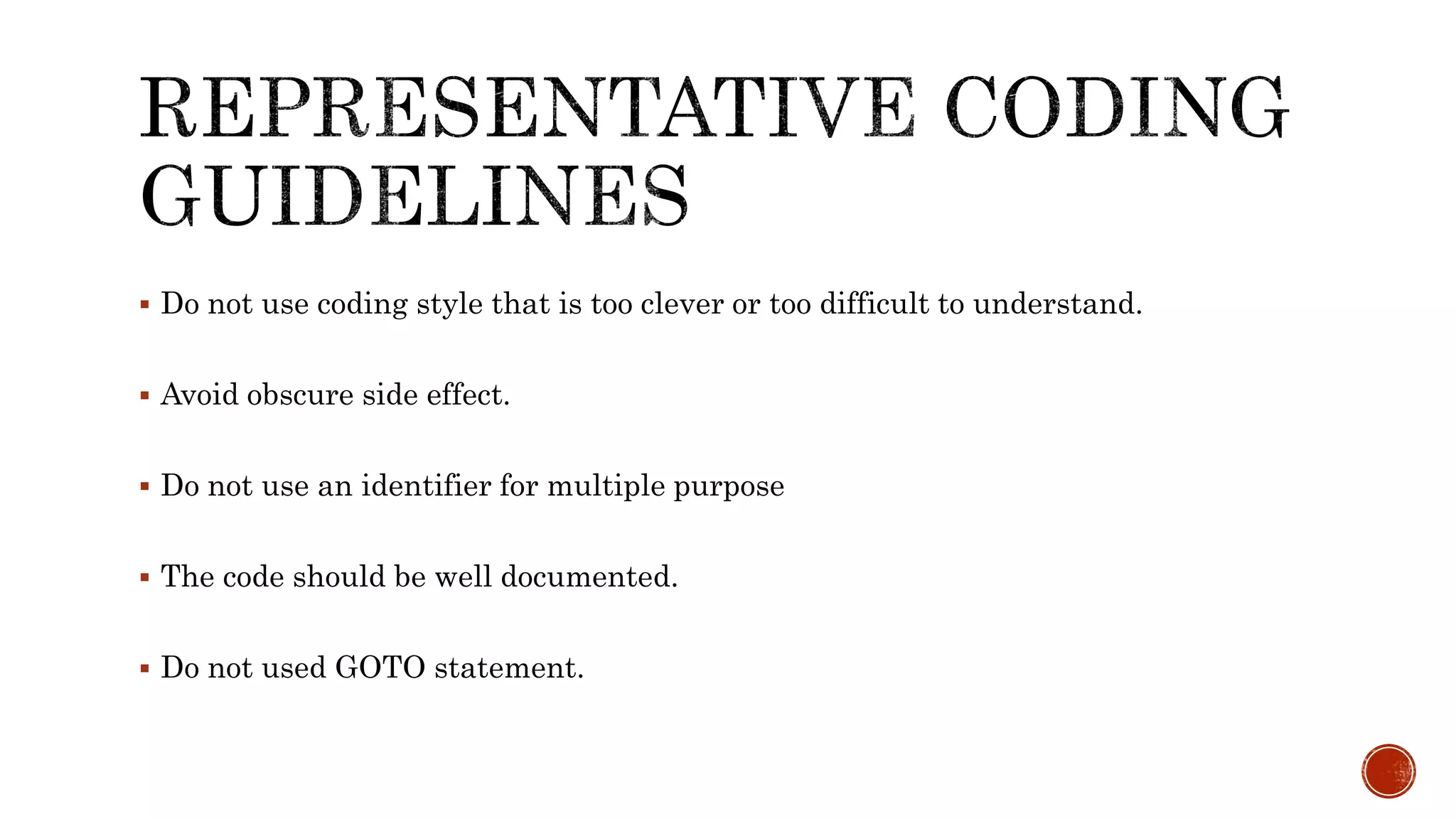
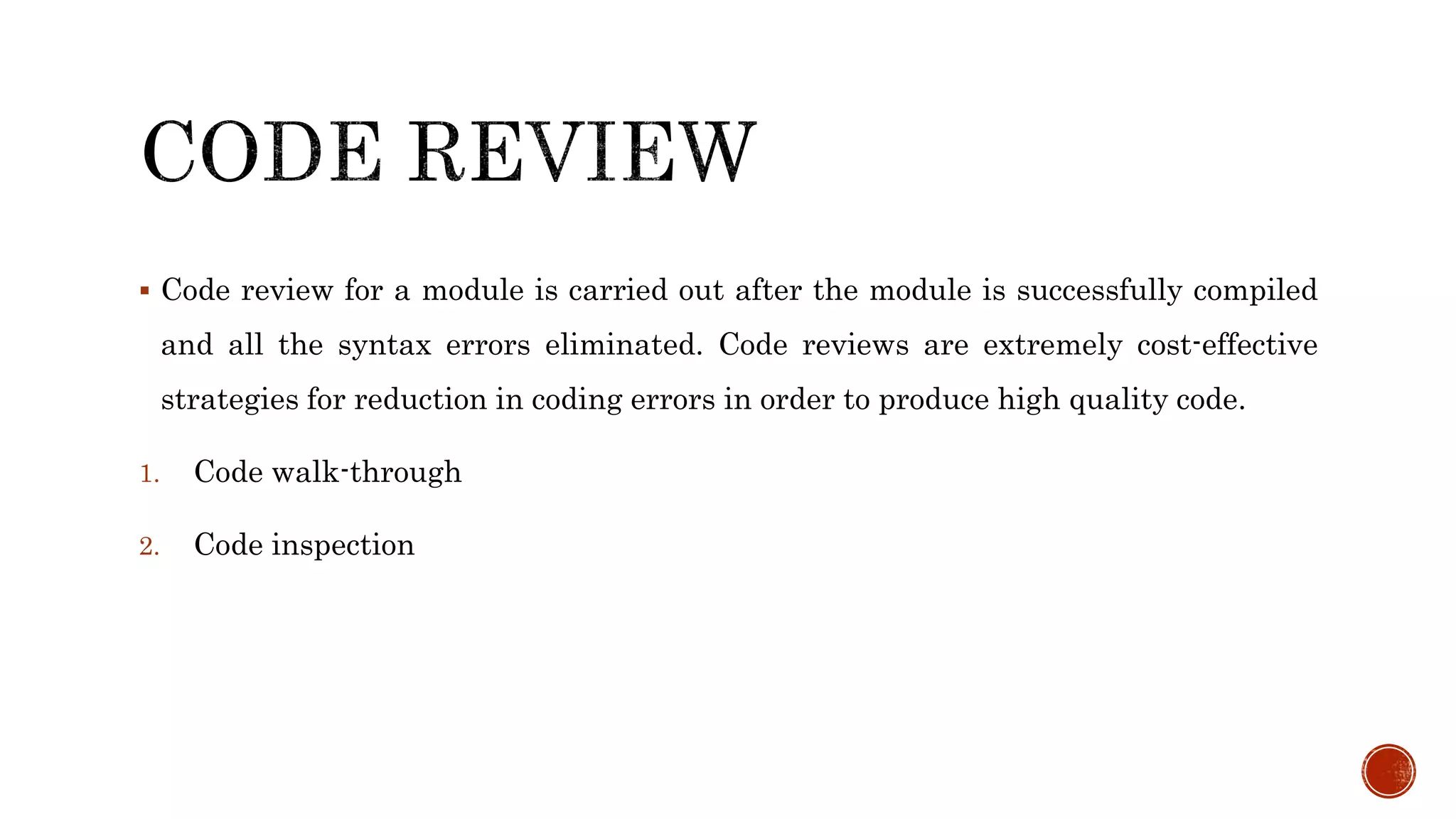
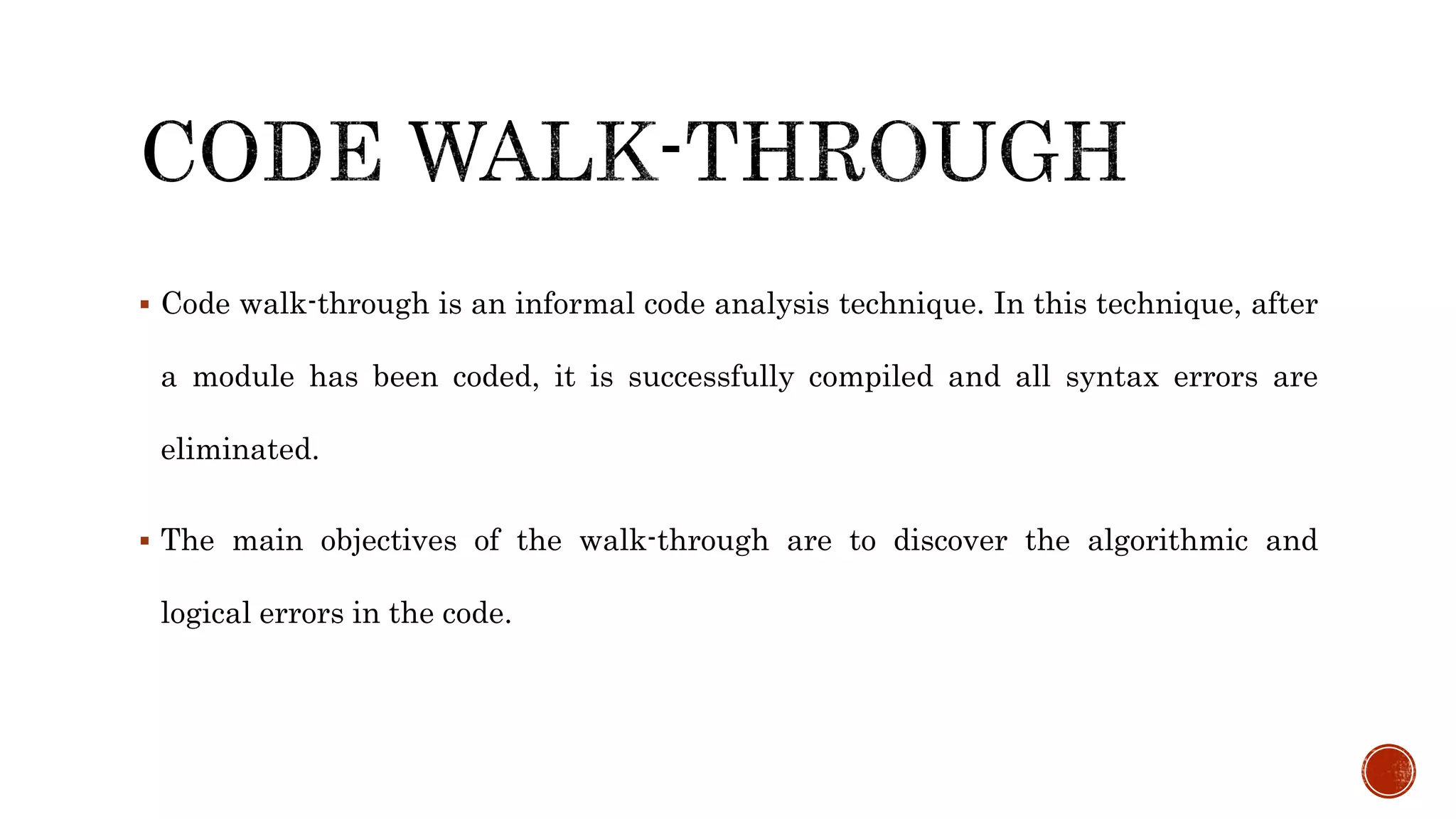
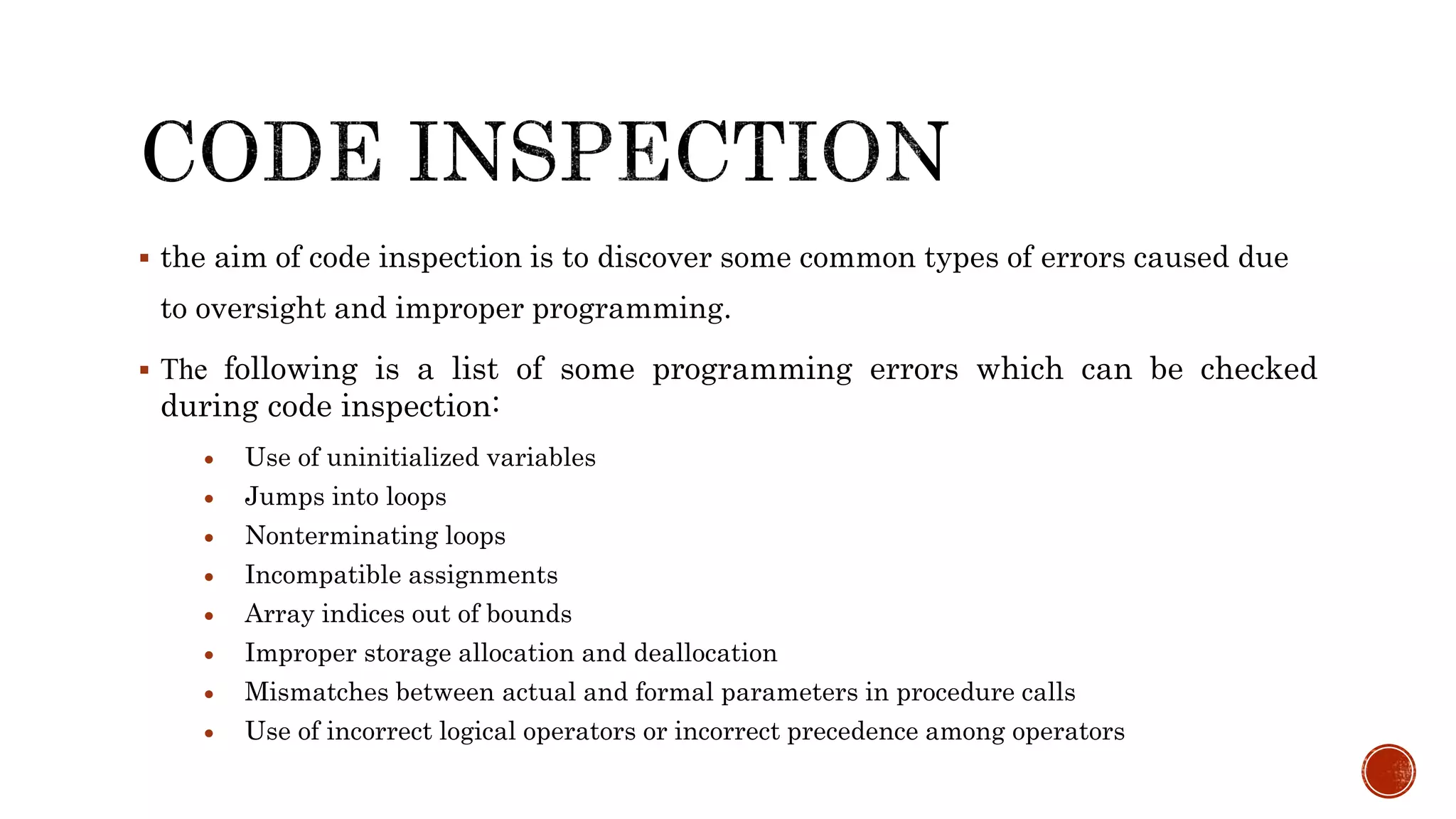
![ Testing a program consists of subjecting the program to a set of test inputs (or test cases) and observing if the program behaves as expected. The following are some commonly used terms associated with testing. 1. A failure is a manifestation of an error (or defect or bug). But the mere presence of an error may not necessarily lead to a failure. 2. A test case is the triplet [I, S, O], where I is the data input to the system, S is the state of the system at which the data is input, and O is the expected output of the system. 3. A test suite is the set of all test cases with which a given software product is to be tested.](https://image.slidesharecdn.com/codingandtesting-200930030847/75/Coding-and-testing-In-Software-Engineering-8-2048.jpg)
![ Following is simple programming error. If (x>y) max = x; else max = x; The test suite ((x = 3. y = 2); (x = 2, y = 3)) can detect the error whereas a larger test suite ( (x = 3, y = 2); (x = 4, y = 3); (x = 5, y = 1)] does not detect the error.](https://image.slidesharecdn.com/codingandtesting-200930030847/75/Coding-and-testing-In-Software-Engineering-9-2048.jpg)
